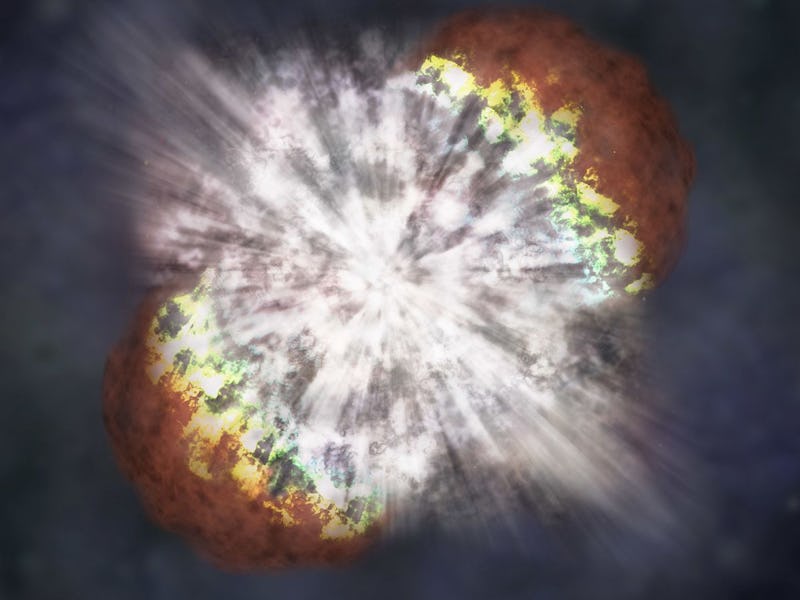Astronomers Accidentally Detect an Extremely Rare Supernova
A cosmic explosion almost as old as the universe.

Deep space is full of chaotic and unimaginably colossal explosions, most of which go completely undetected by humans simply because of how far away they are.
But recently, a group of international astronomers unintentionally detected the explosion of a massive star — a blast known as a superluminous supernova, or SLSN. The light from this cataclysmic cosmic event took 10.5 billion years to reach Earth, making it the oldest and the farthest supernova ever observed.
Join our private Dope Space Pics group on Facebook for more strange wonder.
The team of astronomers dubbed this humongous exploding star DES16C2nm, which they first detected in August 2016. They published their findings in The Astrophysical Journal on February 8.
This monumental discovery was made possibl by the Dark Energy Survey (DES), an international effort to map millions of galaxies in an attempt to learn more about dark energy — the mysterious force believed to be accelerating the expansion of the universe. The scientists involved in this project were simply going about routine surveys when DES16C2nm appeared like a blip on their radar.
Before and after the explosion was detected.
“Such supernovae were not thought of when we started DES over a decade ago,” co-author Bob Nichol from the Institute of Cosmology and Gravitation said in a statement. “Such discoveries show the importance of empirical science; sometimes you just have to go out and look up to find something amazing.”
Supernovae occur at the end of a star’s life, once its core accumulates so much mass it collapses and expels everything out into the void. Talk about going out with a bang.
Astronomers observe a few hundred supernovas per year, which is an infinitesimal amount if you take into account the billions of stars in the universe. But superluminous supernovas are on a whole other level.
The first confirmed one was discovered in 1998, and roughly a hundred more have since been observed.
Today it is thought that only stars with 40 times the mass of the sun can undergo SLSNs. Spotting these gives astronomers a glimpse at the temperature of the explosion and what kind of metals it produces, key factors in understanding what caused the explosion in the first place.
DES16C2nm has given researchers important information about supernovae, but it has also reshaped the purpose of DES.
“Finding more distant events, to determine the variety and sheer number of these events, is the next step,” said co-author Mark Sullivan from the University of Southampton in a press release. “Now we know how to find these objects at even greater distances, we are actively looking for more of them as part of the Dark Energy Survey.”
This means there is hope to find evidence of more explosions that are almost as old as time itself.